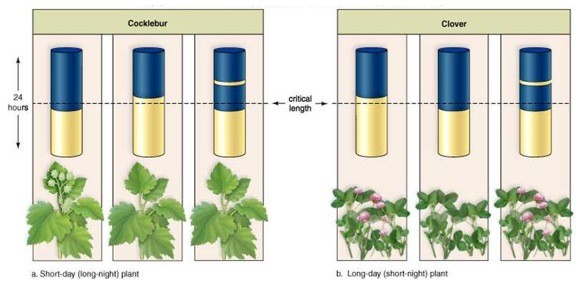If a virus enters the lytic phase in a host's cell, it will cause the host cell to
A. reject the virus.
B. initiate an attack on the virus.
C. lyse due to the action of enzymes.
D. replicate itself at a higher than normal frequency.
E. shrink because of the loss of cytoplasm that has been used in the synthesis of viral DNA.
Answer: C
You might also like to view...
The earliest known organism capable of sexual
reproduction is a type of a. virus. b. bacterium. c. alga. d. animal-like protist. e. fungus.
When DDT was first introduced, insects were very susceptible to it. The development of resistance to
DDT by insects was the result of a. special creation. b. natural selection of forms that expressed genes for resistance. c. the high biotic potential of insects. d. a naturally occurring example of inheritance of acquired characteristics. e. mutation induced by DDT.
 The cylinders in this experiment represent a 24-hour period. The light area represents light periods during a 24-hr. period and the dark area represents dark periods during a 24-hr. period. The critical length of dark vs. light periods for flowering is depicted by the dotted line. Note that some plants are flowering and some are not flowering. Study the results of this experiment on photoperiodism and flowering to determine whether the following statements are true or false.Short-day plants flower when the day length is longer than the critical length.
The cylinders in this experiment represent a 24-hour period. The light area represents light periods during a 24-hr. period and the dark area represents dark periods during a 24-hr. period. The critical length of dark vs. light periods for flowering is depicted by the dotted line. Note that some plants are flowering and some are not flowering. Study the results of this experiment on photoperiodism and flowering to determine whether the following statements are true or false.Short-day plants flower when the day length is longer than the critical length.
Answer the following statement true (T) or false (F)
Blood vessels are found in the
A. stratum corneum B. dermis C. stratum basale D. subcutaneous layer E. dermis and subcutaneous layer